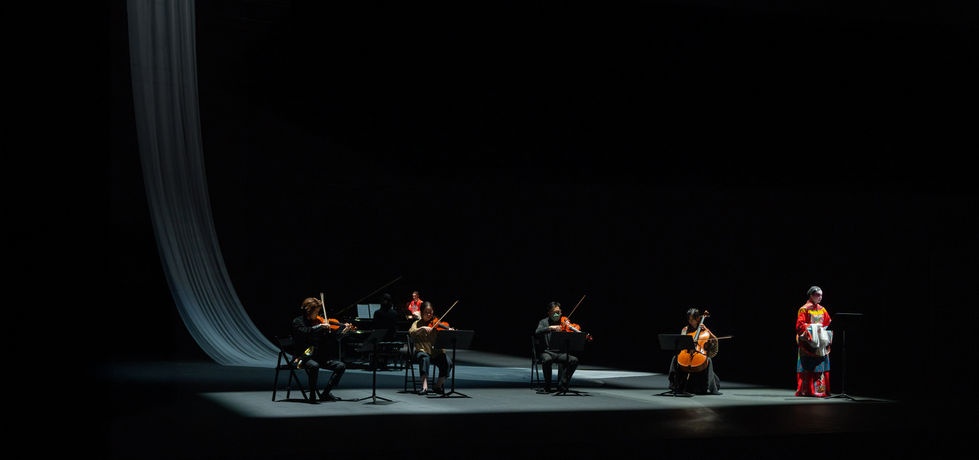Create Your First Project
Start adding your projects to your portfolio. Click on "Manage Projects" to get started
帝女應如 Anastasia Tathagata
Project type
Contempory Cantonese Opera
Date
26-27, Oct 2023
Location
葵青劇院演藝廳, Kwai Tsing Theatre, 香港 Hong Kong
Creative Team
作曲 |甘聖希
弦樂四重奏|王倩兒、陳朗瑚、陳煒彬、賈楠
鋼琴|譚逸(譚縉謙)
演員|梁振文、吳穎霖
導演|鄧灝威
佈景設計|胡瑋樂
燈光設計|黃子健
執行燈光設計|何雅榕
音響設計|江紫櫟
監製|李欣祈
製作經�理/ 舞台監督|梁烯樺
助理舞台監督|陳佩詩
音響技師|Stephanie Wong
粵劇衣箱|梁笑微
《帝女花》寫帝女在命運與意志間掙扎:是被時代吞沒,還是選擇自盡?那份決絕究竟是狂妄或愚忠、誓盟或黃粱?
早期泥印本保留的〈樹盟〉一場,重現唐滌生原構想,當中的一句詩「到死如花也並頭」,原字應為「到死應如花並頭」。究竟何謂應如?又為何「應如」?
新製作把全劇曲詞拆解,再以當代音樂重組為大型組曲,用聲音帶領觀眾在二元對立之間,為「帝女花」寫下屬於今日的註腳。
Princess Chang Ping stands torn between destiny and resolve: will she be consumed by the march of history, or choose death on her own terms? Is her final act reckless passion or blind fidelity—an unbreakable vow, or a fleeting dream?
The earliest “mud-print” edition preserves the scene “Vow beneath the Camphor Tree,” restoring Tong Tik-sang’s original vision. In it, the line usually rendered as “To die, like blossoms joined head-to-head” should properly read “To die, as blossoms ought to bloom in pairs.” What, then, is implied by this ought—and why must it be so?
This new production deconstructs the entire libretto, recomposing it as a large-scale contemporary suite. Through sound, it guides the audience across the opera’s binary tensions, offering a distinctly modern footnote to The Flower Princess.


























